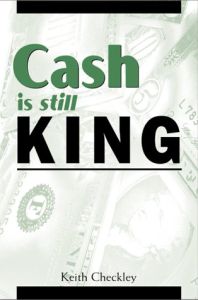Join getAbstract to access the summary!

Join getAbstract to access the summary!
Keith Checkley
Cash is Still King
The Survival Guide to Cash Flow Management
AMACOM, 1999
What's inside?
No matter what new terms, techniques and fads emerge, business is all about cash. Always has been. Always will be.
Recommendation
Keith Checkley believes in a simple premise: Cash flow is the heart of business. It is also the heart of his new book, a sequel to 1995’s Cash is King. Using a detailed and exhaustive discussion of the cash-flow cycle as his springboard, Checkley leaps into the depths of business strategy, product development and restructurings. Just when it’s all getting a bit too deep, he surfaces with penetrating case studies from companies like Dell. getAbstract recommends this book to financial and non-financial pros alike, all of whom will benefit from its succinct definitions of finance terms and its clear explanation of critical mathematic formulas. While many business and management books suffer from a lack of hard fact and applicability, Checkley gives you the numbers, or more importantly, he gives you the knowledge you need to crunch your own.
Summary
About the Author
Keith Checkley FCIB, who once held management positions at Barclays’ Bank, is an associate director of Prebon Training Services. He has written ten business books including, Finance for Framing, Finance for Small Businesses, Lending and Cash is King - A Practical Guide to Strategic Cash Management the 1995 predecessor to this book.

















Comment on this summary